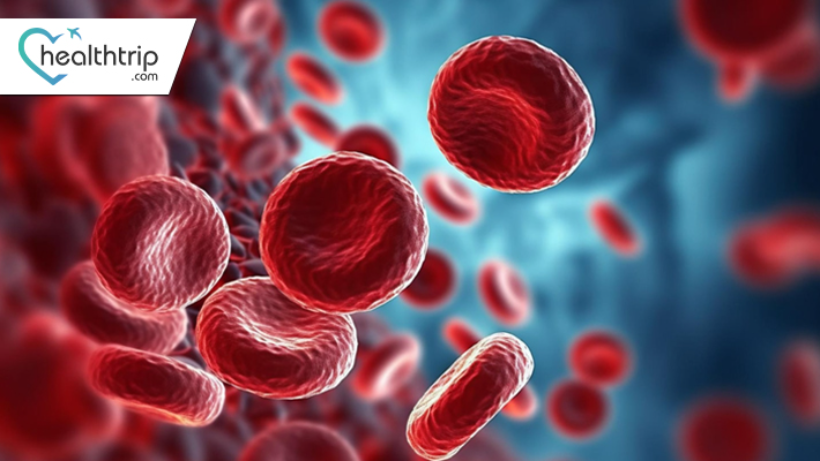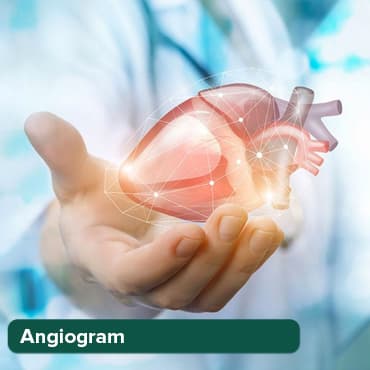
Understanding Acute Myeloid Leukemia (AML)
18 Oct, 2023
 Healthtrip Team
Healthtrip TeamAcute Myeloid Leukemia (AML) is a type of cancer that starts in the bone marrow, the spongy tissue inside our bones responsible for producing blood cells. In simple terms, it's a fast-growing cancer that affects the blood and bone marrow. Now, while it might sound like medical jargon, AML is quite significant in the world of oncology, which is the study of cancer.
Our blood is like a bustling city with different cell types playing specific roles. AML disrupts this harmony by causing the rapid growth of abnormal cells, hindering the normal functioning of blood cells. This disruption can have profound implications for the body, leading to a range of symptoms and complications.
Transform Your Beauty, Boost Your Confidence
Find the right cosmetic procedure for your needs.

We specialize in a wide range of cosmetic procedures

Types:
A. Subtypes of Acute Myeloid Leukemia
1. Myeloblastic Leukemia:
Myeloblastic leukemia is a subtype of AML that originates from immature myeloid cells in the bone marrow. These cells, called myeloblasts, fail to mature into normal white blood cells. As a result, the bone marrow becomes crowded with these abnormal cells, leading to a decrease in the production of healthy blood cells. Myeloblastic leukemia is characterized by the rapid proliferation of myeloblasts and is often associated with symptoms like fatigue, infections, and easy bruising.
2. Promyelocytic Leukemia:
Promyelocytic leukemia, also known as acute promyelocytic leukemia (APL), is a distinct subtype of AML. In this type, there is an abnormal growth of immature white blood cells called promyelocytes. One characteristic feature of APL is the presence of a specific chromosomal abnormality known as the translocation between chromosomes 15 and 17. APL is considered a medical emergency due to an increased risk of bleeding, and it often requires specific treatment strategies, including all-trans retinoic acid (ATRA) therapy.
3. Myelomonocytic Leukemia:
Myelomonocytic leukemia is a subtype that exhibits features of both myeloid and monocytic cells. It is characterized by the proliferation of abnormal cells that have characteristics of both myeloblasts and monoblasts. This subtype may present with a combination of symptoms associated with myeloid and monocytic leukemias. The presence of both cell types complicates the disease profile and may influence treatment approaches.
Most popular procedures in India
Atrial septal defect
Upto 80% off
90% Rated
Satisfactory

Coronary Angiogram a
Upto 80% off
90% Rated
Satisfactory

Coronary Angiogram C
Upto 80% off
90% Rated
Satisfactory

Liver Transplant
Upto 80% off
90% Rated
Satisfactory

Total Hip Replacemen
Upto 80% off
90% Rated
Satisfactory

Demographics:
A. Age Distribution:
Acute Myeloid Leukemia (AML) can affect individuals of various age groups, but its incidence tends to increase with age. AML is more commonly diagnosed in adults than in children. The risk of developing AML rises significantly after the age of 45, and the highest incidence is observed in individuals over 65. However, AML can occur at any age, including in children, although pediatric AML is considered a separate entity with distinct characteristics.
B. Gender Prevalence:
AML does not show a significant gender bias, as it can affect both males and females. However, there might be subtle differences in the incidence or characteristics of AML between genders. Some studies suggest a slightly higher prevalence in males, but overall, AML affects both men and women across various age groups.
C. Ethnic and Geographic Considerations:
The incidence of AML can vary among different ethnic groups and geographic regions. Some genetic and environmental factors may contribute to these variations. For example, certain genetic mutations associated with AML may be more prevalent in specific ethnic populations. Additionally, exposure to environmental risk factors, such as certain chemicals or radiation, can vary by region and influence the incidence of AML.
Symptoms and Signs:
A. General Symptoms
- Fatigue
- Fever
- Unexplained Weight Loss
B. Hematologic Symptoms
- Anemia
- Easy Bruising
- Increased Susceptibility to Infections
Causes:
A. Genetic Factors
- Inherited genetic mutations
- Chromosomal abnormalities (e.g., Down syndrome)
- Family history of leukemia
B. Environmental Factors
- Exposure to certain toxins (e.g., benzene, radiation)
- Occupational exposure to chemicals
- Smoking and tobacco use
C. Previous Cancer Treatments
- Radiation therapy
- Chemotherapy, especially certain types
- Previous bone marrow or stem cell transplant
D. Other Risk Factors
- Age (incidence increases with age)
- Gender (slightly higher prevalence in males)
- Certain blood disorders (e.g., myelodysplastic syndromes)
- Certain pre-existing medical conditions (e.g., aplastic anemia)
Diagnosis:
A. Blood Tests:
- Complete Blood Count (CBC): Utilizing a simple blood sample, the CBC assesses the quantity and quality of various blood components. In AML diagnosis, it helps identify abnormalities, such as low red blood cell count, low platelets, and abnormal white blood cell counts.
- Peripheral Blood Smear: This diagnostic technique involves examining a thin layer of blood under a microscope. A peripheral blood smear allows for the visual inspection of blood cells, helping identify abnormal shapes, sizes, or other irregularities that may indicate AML.
B. Bone Marrow Biopsy:
A bone marrow biopsy involves extracting a small sample of bone marrow, typically from the hipbone. This procedure provides a detailed look at the bone marrow's composition, helping confirm the diagnosis of AML and assess the extent of disease involvement.
C. Cytogenetic Analysis:
Cytogenetic analysis involves examining the chromosomes within cells. In AML, specific chromosomal abnormalities can be indicative of the disease. Identifying these abnormalities through cytogenetic analysis aids in determining prognosis and guiding treatment decisions.
D. Molecular Testing:
Molecular testing delves into the genetic makeup of cells. In AML, molecular tests can identify specific mutations or alterations in genes, providing valuable information for prognosis and treatment planning. Techniques like polymerase chain reaction (PCR) and fluorescent in situ hybridization (FISH) are commonly employed.
Treatment Options:
A. Chemotherapy:
Chemotherapy is a primary treatment for Acute Myeloid Leukemia (AML). It involves the use of drugs to kill or control the growth of leukemia cells. These drugs are typically administered intravenously or orally, and the treatment may consist of multiple cycles. Chemotherapy aims to eradicate leukemia cells throughout the body, including the bone marrow, and induce remission. Different combinations of drugs may be used, and the choice of regimen depends on factors such as the patient's age, overall health, and specific characteristics of the leukemia cells
B. Targeted Therapy:
Targeted therapy is a more recent and precise approach to treating AML. It involves using drugs that specifically target certain molecules or pathways involved in the growth and survival of leukemia cells. For example, drugs like tyrosine kinase inhibitors may be used to target specific genetic mutations found in some cases of AML. Targeted therapies often have fewer side effects compared to traditional chemotherapy and are particularly beneficial in cases where specific molecular abnormalities are identified.
C. Bone Marrow Transplant:
A bone marrow transplant, also known as a stem cell transplant, may be recommended for certain patients with AML, especially those at high risk of relapse. This procedure involves replacing the diseased bone marrow with healthy stem cells from a donor (allogeneic transplant) or, in some cases, from the patient themselves (autologous transplant). The goal is to re-establish normal blood cell production. However, bone marrow transplant is an intensive procedure associated with potential complications, and eligibility depends on factors such as age, overall health, and the availability of a suitable donor.
D. Supportive Care:
Supportive care is an integral part of AML treatment and focuses on managing symptoms and side effects of both the disease and its treatment. This may include blood transfusions to address anemia and platelet transfusions to manage bleeding disorders. Additionally, medications and interventions to prevent or manage infections are crucial. Supportive care aims to improve the patient's quality of life during and after treatment and is tailored to the individual needs and circumstances of each patient.
Complications:
- Increased vulnerability to bacterial, viral, and fungal infections due to compromised immune function.
- Thrombocytopenia (low platelet count) leading to easy bruising, prolonged bleeding, and an increased risk of hemorrhage.
- Progressive impact on vital organs, such as the liver, kidneys, and lungs, due to the infiltration of abnormal cells.
Treatment-Related Complications:
- Adverse effects from chemotherapy, such as nausea, fatigue, and the potential for long-term issues like secondary cancers.
Outlook/Prognosis:
A. Prognostic Factors:
Prognosis in AML depends on factors like age, overall health, genetic mutations, and treatment response. Genetic abnormalities, such as FLT3 mutation, may indicate higher risk, while achieving remission is a positive indicator.
B. Survival Rates:
AML survival rates vary based on age, genetic profile, and subtype. Five-year survival rates have improved with advanced treatments, but individual outcomes vary. Treatment effectiveness, achieving remission, and follow-up play key roles in prognosis.
C. Impact of Treatment on Prognosis:
Treatment effectiveness significantly influences AML prognosis. Complete remission after initial treatment is positive, but relapse risk exists. Tailored treatments, including targeted therapies and transplants, impact long-term outcomes. Regular monitoring is crucial.
Understanding Acute Myeloid Leukemia (AML) requires recognizing its nuances, from subtypes to demographic variations and symptoms. Tailoring treatment to the interplay of genetic, environmental, and treatment factors is crucial. Ongoing research and precision medicine advancements provide hope for more effective therapies, while awareness and early detection remain paramount. A concerted effort in education and advocacy is essential to transform AML outcomes, emphasizing the critical role of timely intervention and fostering awareness for improved prospects in this challenging landscape.
Wellness Treatment
Give yourself the time to relax
Lowest Prices Guaranteed!

Lowest Prices Guaranteed!





